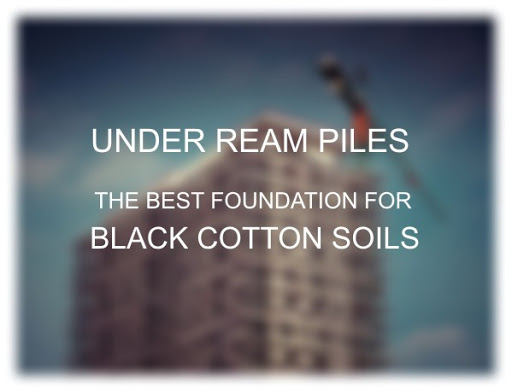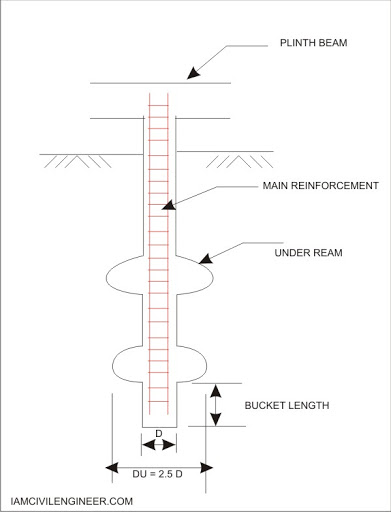Saad Iqbal | 🗓️Modified: February 2, 2017 | ⏳Read Time: 4 min | 👁Post Views: 1241
Many times during soil exploration, geotech engineers have to face soils that are very likely to undergo volumetric changes due to moisture variation underneath the ground surface. This expansion and shrinkage can cause distress which is very dangerous and critical as far as bearing of the foundation is concerned.
This is the case for all sorts of soils having 2.5 m or more depth of famous black cotton soil. For such a soils the geotech engineers have got a solution in the form of a specially designed pile foundation called under-reamed pile foundation.
Under-reamed Pile foundation have mechanically formed enlarged bases called bulbs which are one or more in nos at its lower ends and can be as much as 6 m in diameter and can be at a shallow depth of range 1 to 6 m depending on the critical depth of soil characteristics with that of moisture movement.
If bulb is provided beyond the critical depth of moisture movement as in expansive soils like black cotton soil than such foundation will be anchored to the ground and will not have any effect due to swelling and shrinkage of soil.
This proves the fact why under-reamed piles are considered as most safe and economical foundation for black cotton soils. Under-reamed pile foundations are normally reinforced to take tensile stresses. It has been observed that buildings having foundation on under-reamed piles are free from distress caused by expansive soils.
In case of under-reamed piles, dia of pile denoted by D may varies between 20 to 50 cm whereas the dia of under-ream bulb denoted by Du is normally 2.5 times the dia of stem however, it can vary between 2 to 3 times the dia of stem. In under-ream piles an angle of 45 degrees with horizontal is recommended for all under reamed bulbs.
In case of multi-reamed piles, the center to center vertical spacing between two bulbs may vary from 1 ¼ to 1 ½ times the under-reamed diameter (Du). Cost advantages of under-reamed piles are due to the reduced pile shaft diameter, resulting in less concrete needed to replace the excavated material.
Types of Under-reamed piles
There are basically two types of under-ream piles depending on the method used for its casting and positioning
• Precast under-reamed piles ,
• Cast-in-situ under-reamed piles
Pre-cast under ream piles require special pile driving equipment, but have an advantage that in this case no need to drill and bore thus time will be saved.
In-situ and cast-in place under ream piles mostly rely on end bearing.
It has been reported based on various research papers that bearing capacity of under-reamed pile is directly related to the number of the bulbs at the base.
For the construction of under ream piles tools like spiral auger, under-reaming tool and boring guide can be used depending on the availability and ease of use. To speed up construction mechanical rig can also be used.
The uses and applications of under ream piles are observed in
• machine foundation,
• over bridges foundation,
• electrical transmission tower foundation
• sand water tanks
On the basis of various studies it has been observed that pile loading capacity for under-reamed piles depends on two ratios:-
o Ratio between piles distance to Diameter of under-reamed bulbs (S/Du)
o Ration between Piles distance to diameter of pile (s/d)
Suitable and optimum values for above mentioned ratios are selected to achieve maximum benefit and re sult from under ream foundation.


















